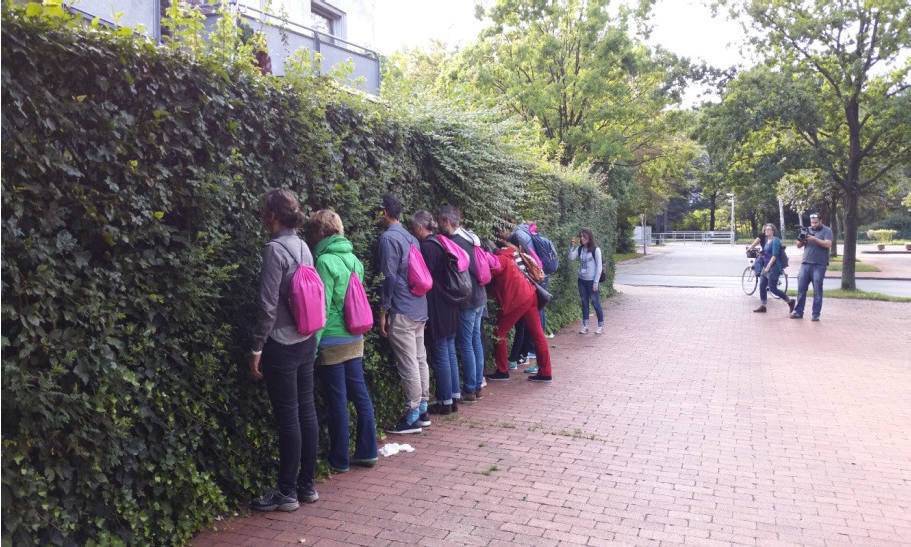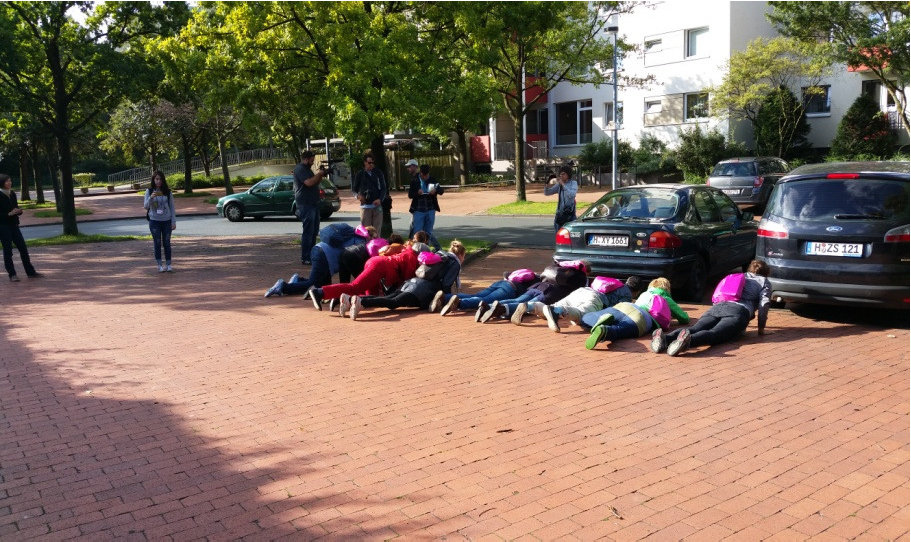This column aims at discovering harbours from a landscape perspective, which means extending our view beyond the delimited harbour area towards the surrounding landscape of which the harbour is a constitutive part. This time, let us look at an emerging harbour landscape of extreme acuteness for Europe – that of migration. Migrants are in search of a harbour to accommodate them, or to facilitate further transit. Harbour cities have always played the role of accommodators and transit facilitators, they are a constitutive part of a landscape of human motion, physically and culturally. Today, knowledge accumulated in harbour cities might be needed to advise Europe in setting up guidelines for dealing with migrants, physically and culturally. All over humankind’s history have groups of humans, sometimes entire populations, migrated for reasons of war, famine, discrimination and other life threatening issues. People on the move are not a new phenomenon, even though these days in Europe, after half a century of relative stability, some sedentary Europeans might already have forgotten about the moves of their ancestors.
This early September, thousands of migrants from Syria, Afghanistan, Eritrea, blocked at Budapest’s Keleti train station where they were refused to access trains, decided to simply walk the motorway – towards the Austrian border. Shortly after, when Denmark stopped train connections with Germany, a similar walk set out along Danish motorways to reach Sweden. Some months earlier, thousands of others almost walked across the water, travelling the few kilometers between the Turkish coast and the Greek islands in nothing else than fragile dinghies. As common as dangerous are the ‘water walks’ between Lybia and Italy, across the straight of Gibraltar, from the West Sahara to the Canary Islands. These days, those walking land or water do not aim at reaching an official harbour in the first place. They are happy with a pebble beach, a border village or a motorway rest area, provided it is situated in EU-Europe. The next step, of course, is the nearest (harbour) city – where to register officially and get into the European system.
This early September, just at the moment of the Budapest walks to Austria, a symposium called ‘Let’s walk urban landscapes’ was held in Hannover, organized by Studio Urbane Landschaften, an association of German landscape researchers, teachers and practitioners, supported by the Volkswagen Foundation, addressing designers of urban landscapes. An irony that a foundation sponsored by the German car industry promotes walking landscapes? Here is the point: Instead of inviting famous keynote speakers alone to explain new tendencies in urban landscape research and practice, the organizers invited the audience to experience urban landscapes –walking Hannover with different techniques but always in immediate contact and through bodily immersion with the object of study. Moving in a group of symposium participants under the guidance of a choreographer was one such technique. Direct experience made more clear than any lecture about Henri Lefèbvre what the physical presence in space of a group can produce: power. Stepping alone onto a heavy traffic artery is dangerous, doing so in a group stops cars and makes room for people. An incredible experience of empowerment through togetherness. The next step, then, can be to anchor the experienced uses in the urbanistic system of the city of Hannover. The starting point is the same as for the migrants: Let’s walk!
Over their history, harbour cities have translated experiences of seafaring, global trade, maritime industry and human moves into their urbanistic systems, which emcompass many aspects from building codes to trade rules to immigration and integration procedures. This local culture is different from other cities’ local culture. Kos, a small harbour city in Greece, collects migrants from the beach to lodge and feed and facilitate them further transit, as unpretentiously as possible. No fuzz, just an everyday’s job at the watery border of Europe, and not an easy one in a situation of precariousness resulting from austerity measures imposed onto Greece by Europe’s finance managers, apparently people inexperienced in moving anything else than money. Impossible to imagine in Kos scenes like in Munich, definitely not a harbour city, where locals welcomed the migrants from Budapest like pop-stars: over-reaction of people inexperienced in moving anything else than their big BMWs?
Experiencing space appropriation: Moving through Hannover with choreographer Emmanuele Braga at Let’s walk urban landscapes symposium, 2 Sept 2015 (photos Lisa Diedrich).
Citizens, politicians, professionals of port cities, where are you to share your knowledge with Europe? Today, many cities far from the water are about to become harbours. They need lessons in moving matters, and not through keynote lectures alone. What about another hands-on symposium on harbour culture – port cities, let’s move Europe!
Appropriating space: Migrants accommodated in Kos, Greece, after having crossed the Aegean Sea from Turkey, 9 Sept 2015 (photo Lisa Diedrich).
References
https://letswalkurbanlandscapes.urbanelandschaften.de/
Head image: Appropriating space: Migrants accommodated in Kos, Greece, after having crossed the Aegean Sea from Turkey, 9 Sept 2015 (photo Lisa Diedrich).


